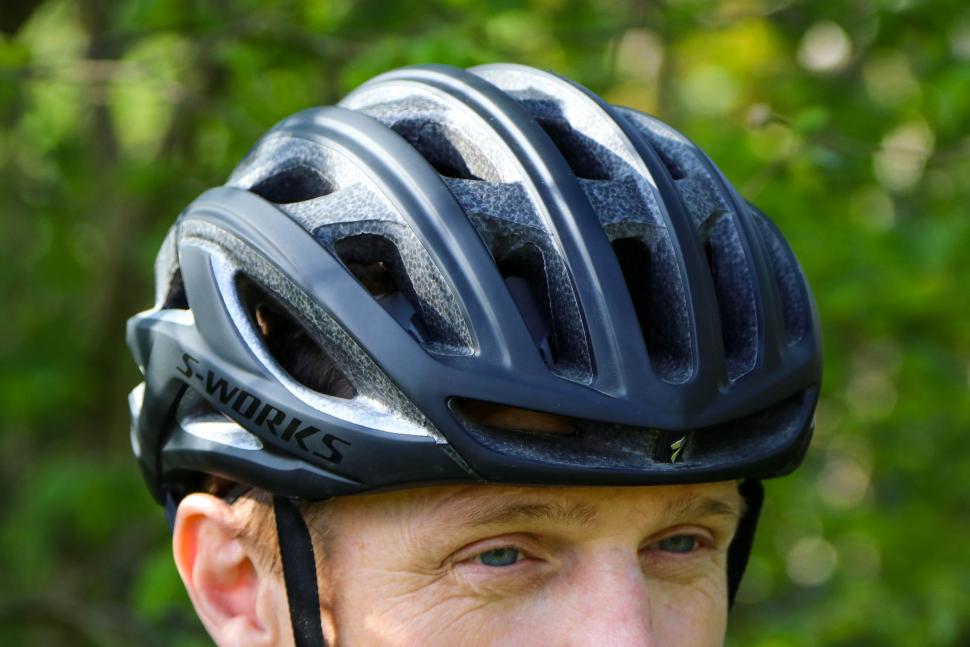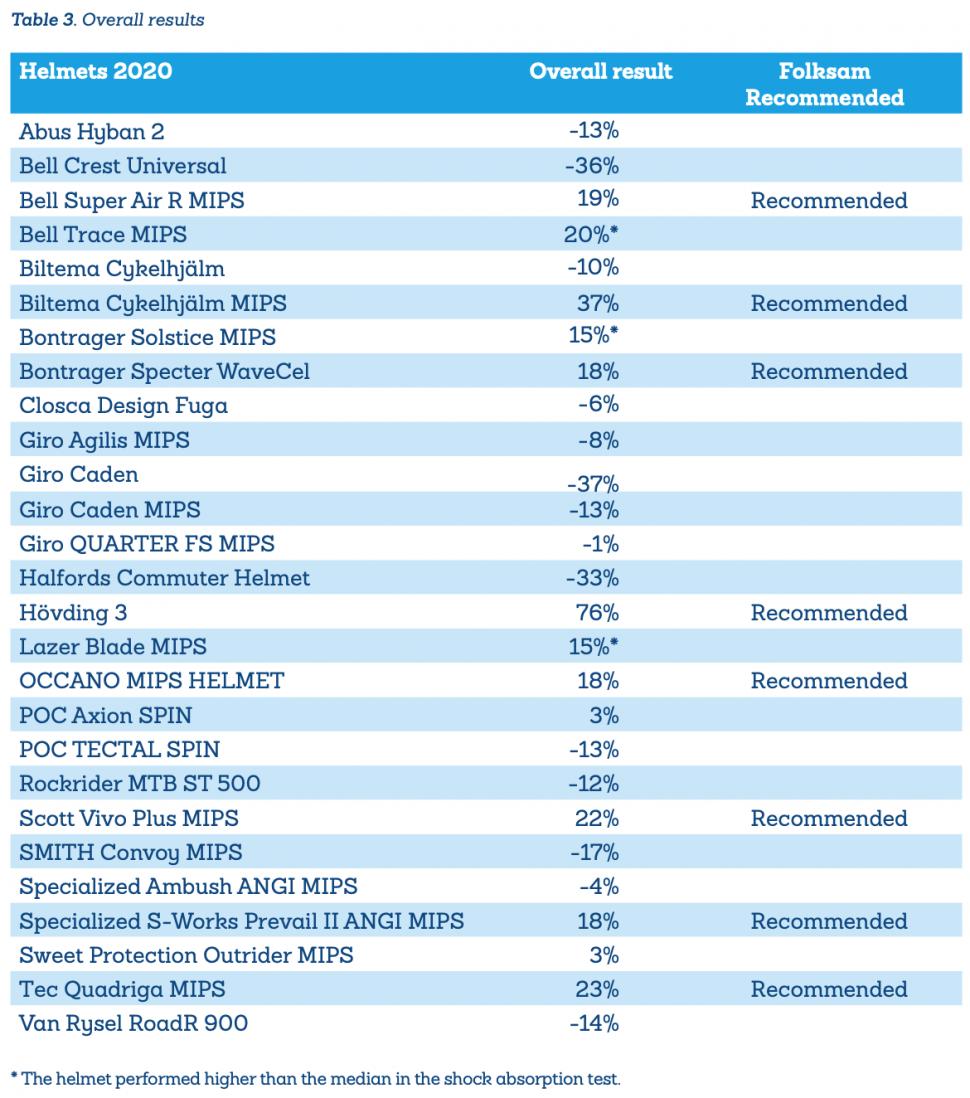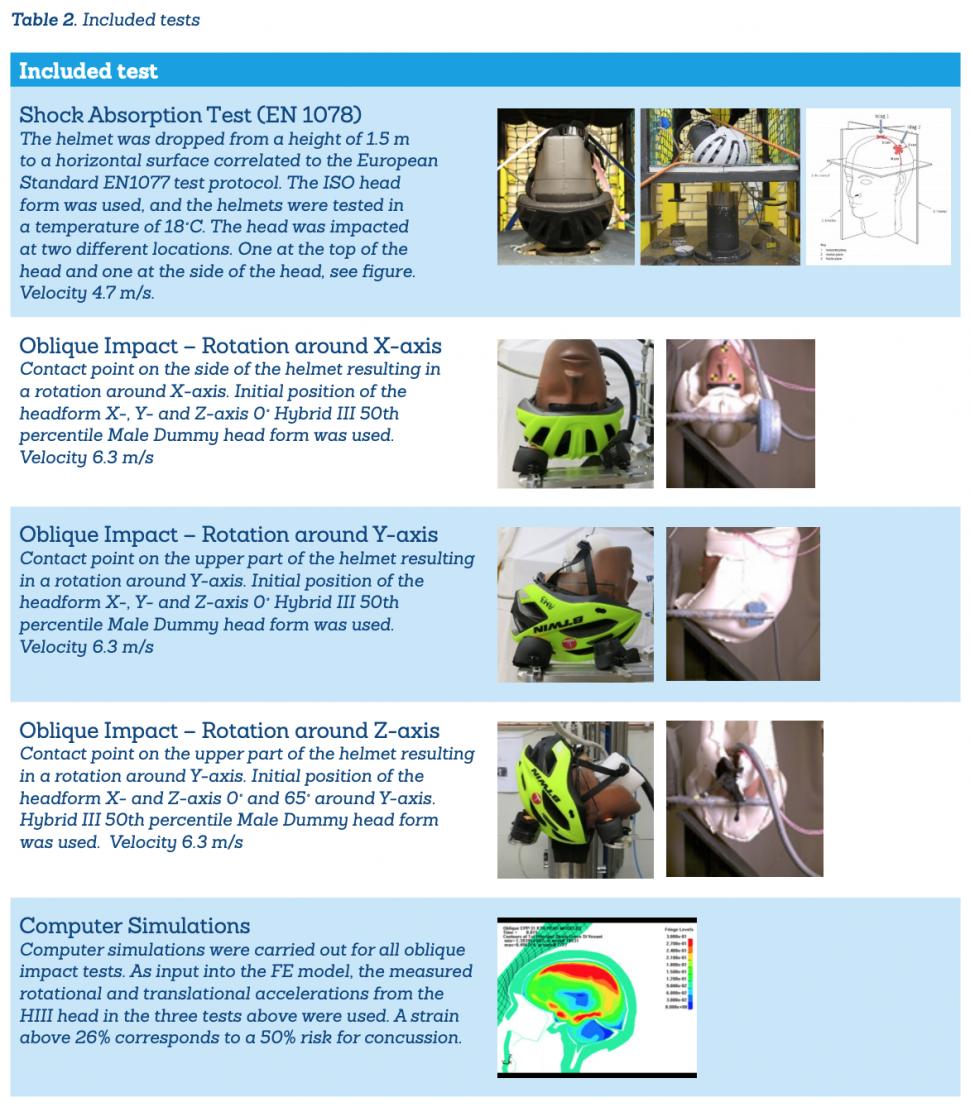- News
- Reviews
- Bikes
- Accessories
- Accessories - misc
- Computer mounts
- Bags
- Bar ends
- Bike bags & cases
- Bottle cages
- Bottles
- Cameras
- Car racks
- Child seats
- Computers
- Glasses
- GPS units
- Helmets
- Lights - front
- Lights - rear
- Lights - sets
- Locks
- Mirrors
- Mudguards
- Racks
- Pumps & CO2 inflators
- Puncture kits
- Reflectives
- Smart watches
- Stands and racks
- Trailers
- Clothing
- Components
- Bar tape & grips
- Bottom brackets
- Brake & gear cables
- Brake & STI levers
- Brake pads & spares
- Brakes
- Cassettes & freewheels
- Chains
- Chainsets & chainrings
- Derailleurs - front
- Derailleurs - rear
- Forks
- Gear levers & shifters
- Groupsets
- Handlebars & extensions
- Headsets
- Hubs
- Inner tubes
- Pedals
- Quick releases & skewers
- Saddles
- Seatposts
- Stems
- Wheels
- Tyres
- Health, fitness and nutrition
- Tools and workshop
- Miscellaneous
- Tubeless valves
- Buyers Guides
- Features
- Forum
- Recommends
- Podcast
news
 2020 Specialized S-Works Prevail II W- ANGI helmet.jpg
2020 Specialized S-Works Prevail II W- ANGI helmet.jpgOnly five cycle helmets available in the UK get recommended status in new safety testing
New safety testing, funded by the Road Safety Trust and conducted by insurance company Folksam, has concluded with eight helmets receiving a ‘recommended’ mark, with only five of these readily available in the UK.
The Swedish insurance company Folksam has conducted its latest helmet safety testing with a range of 2020 road, mountain bike and urban cycle helmets. Out of the 27 helmets, or airbag helmets included in the test, only eight were given Folksam ‘recommended’ status. Of the test sample, 23 are available in the UK, with only five receiving recommended status.
Video: road.cc crash tests the Hövding 2.0 Airbag for urban cyclists
The eight recommended helmets were:
- Hövding 3 - £250
- Biltema Cykelhjälm Mips
- Tec Quadriga Mips
- Scott Vivo Plus Mips - £95.99
- Bell Super Air R Mips - £275
- Bontrager Specter WaveCel - £129.99
- Occano Mips
- Specialized S-Works Prevail II/ Angi - £170
Those with UK prices next to them are those that are available in the UK.
The helmets were tested for the gravitational force equivalent (g) across five test drops. The European standard (EN1078 2012) sets a maximum of 250 g when dropped from 1.5m to a horizontal surface.
The results showed that the best helmet was the Hovding 3 airbag helmet which “performed at least three times better than all the other conventional helmets (40 g vs. other helmets that were around 171 g).”
This performed best across the three oblique impact tests with the lowest risk of concussion in each test.
All you need to know about Mips
Eighteen of the conventional helmets were equipped with technologies aimed at reducing rotational acceleration (15 with MIPS – Multi-directional Impact Protection System – two with SPIN (Shearing Pad INside) and one with WaveCel).
Five physical tests were conducted, two shock absorption tests with straight perpendicular impact and three oblique impact tests. The tests were performed by Research Institutes of Sweden, which is accredited for testing and certification in accordance with the European standard. Computer simulations were subsequently carried out to evaluate the risk of concussion.
“To obtain the best overall result and thereby be awarded the “recommended” label, the helmet needed to perform better than the median in both the shock absorption test and the oblique impact test.”
Setting out the reasons for this testing, Folksam said:
“Annually in Sweden over 1000 cyclists have to visit an emergency care centre due to a head injury after a bicycle crash (Stigson 2015). For Great Britain in 2018, the road casualty statistics indicate that 4205 pedal cyclists suffered a serious injury or fatality – more than 11 per day. The hospital data for England, Scotland and Wales reveal that 18,546 pedal cyclists were admitted to hospital as the result of a transport-related accident between April 2018 and March 2019. Of these, based on previous matching of the hospital and police-reported data, 78% are likely to have sustained a head injury (Talbot et al. 2014). Thus, in Great Britain, it is likely that 40 cyclists a day are admitted for head injuries. In total 70% of the head injuries occur in a single bicycle crash (Stigson 2015). Even though less than a fifth of the head injuries occur when a passenger car was involved, these crashes often result in the most severe injuries.”
Folksam goes on to suggest that “the risk of sustaining a head injury is mitigated if cyclists are using helmets.” This, claims Folksam, “has been demonstrated by epidemiological studies showing that bicycle helmets can reduce head injury risk by up to 69% (Olivier and Creighton 2016).”
Folksam started testing helmets back in 2012 “because the certification test standards of helmets are not sufficient, as it does not cover the helmets’ capacity to reduce rotational acceleration.”
“In the current European certification tests, however, only the energy absorption in a perpendicular impact is evaluated, with the helmet being dropped straight onto a flat anvil and onto a kerbstone anvil. The pass-fail criteria used in the test standard is relatively high (250 g)”
All helmets in the recent test scored lower than 250 g.
The full paper can be viewed here
There are leading advocates of bicycle use for mass transport that suggest that compulsory helmets could be a barrier to getting people onto bikes.
Chris Boardman has been vocal on the subject, suggesting that "helmets are not even in top 10 of things that keep cycling safe."
Cycling UK is also against compulsory helmet use stating that "forcing - or strongly encouraging - people to wear helmets deters people from cycling and undermines the public health benefits of cycling."
Would an improved safety testing protocol make you more likely to don a helmet, or are you still not convinced?
Latest Comments
- pbunyon 1 hour 53 min ago
Looks built out of a washing machine
- Disgusted of Tunbridge Wells 2 hours 35 min ago
When you get a ticket???
- chrisonabike 2 hours 45 min ago
In one sense (the most important one) evidence is irrelevant....
- chrisonabike 4 hours 39 min ago
That was the one (same name in Scotland). Haven't tried a Boris bike yet (or Ken/Khan-cycle ?) but my understanding is they're conceptually...
- wtjs 4 hours 47 min ago
It does say '12S' on the chainring! All we need now from this 'club member' is the picture of the actual crank break
- Bungle_52 6 hours 13 min ago
I think you may have misunderstood the word carnage....
- galibiervelo 7 hours 18 min ago
Love the design. The limitation to 170 mm cranks sent me to the kickR
- S.E. 7 hours 57 min ago
I'm not doing single track (no suspensions, only 30, 35 mm tyres) so 800 lumen is enough for me, on gravel type of trails at maybe max 20-30 km/h,...
- ktache 11 hours 19 min ago
There is a pHd student at work who has an Adidas backpack in reflective iridescence, looks oil slicky in the day. I love both oil slick and...



Add new comment
28 comments
i dont wear a helmet anymore. I did, then stopped, then went back to it for two weeks, now have stopped again. Mine cost 20 quid. I dont see what its going to do for my safety. If i dont fall off my bike, my head will be fine. Have i ever fallen off my bike? never in the last three years of serious cycling. Will it protect me in a crash? only if my hands dont stick out in front of me as i crash to the ground. I mean- i crashed into a stationary car bonnet at 13- 15 mph. I landed on the other side of the car and my head was untouched. My hands did the work. My baseball cap flew off. It was also undamaged, but the video footage from the cam attached to it was great. Helmets dont do anything but show cycling in the uk is dangerous- dutch dont do it, neither will i . Why should we have to wear something annoying, stupid looking and not very protective, just because uk drivers can't drive correctly around us?
Er, because uk drivers can't drive correctly around us.
You know, if I'm ever in the situation like the way helmets are tested (a head form with no body attached) I'd say it's a bit late for the helmet to do any good!
Because no bike helmet test is complete without insisting you buy the second most expensive helmet of the range to be just a little bit safer from a potential concussion...
Oh, and did anyone mention helmets are consumables? so that means a new helmet for every accident that deforms it... yikes that's a scary £250 x infinity bill.
Think I'll just add a bit more distance between me and the nearest car instead >.>
Except for Hedkayse, which not only performs close to the Hovding, but is genuinely multi-impact. In some tests it's been hit 300 times and still works fine... So horay, no longer is your only option an expensive consumable made out of cheap packaging material!
Have a look for yourself: hedkayse.com
So...most helmets not up to the job.
Hooda Thunkit?
Edit: double post
I had a quick look through the recommended (traditional) helmets available here in the UK. Not one goes to a XL size for those of us with stupidly large noggins.
If you look at this, see your own helmet slated (mine is Rockrider 500), but would rather spend less than the recommendations, the Bontrager Solstice MIPS looks nice and scores nearly as highly. But the quoted £35 is for the non-MIPS version. Is the rest of the research as sloppy?
Good to see more independent testing, together with the far larger Virginia Tech database this represents a valuable resource when purchasing a new helmet.
So much better than the information available only a few years ago
For anyone interested in the studies mentioned.
Olivier and Creighton is here :
https://academic.oup.com/ije/article/46/1/278/2617198
Talbot et al is here:
https://repository.lboro.ac.uk/ndownloader/files/16963025/1
Totally pointless British statistics. So, how many of the 40 cyclists a day admitted for head injuries were or were not wearing a helmet? What if all 40 were wearing a helmet at the time of the accident? What would this tell us about the effectivness of a helmet?
Totally pointless comment too. If none of the 40 were wearing helmets, what do you think that would tell us about the effectiveness of a helmet?
Totally pointless reply too. If none of them were wearing helmets it would tell us absolutely nothing at all about the effectiveness of helmets.
Here's a slightly crazy idea.
Why don't you read the research mentioned in the article?
Olivier and Creighton is a really detailed look at injuries sustained by helmeted and non-helmeted cyclists.
Read it ages ago. It adds nothing at all to the original quote from Folksam.
Here's a slightly crazy idea.
Why don't you read the original quote from Folksam (it's in italics so easy to find)
It is meaningless.
You wanted to know how many of the admitted head injuries were wearing helmets.
The research detailed in Olivier and Creighton answers that question.
Read the research and the quote will have the context you desire.
I definitely prefer what does the Virginia Tech University about testing helmet for different sport. Their are far more road helmets in ther range of test and they are continuously add new ones in the list.
https://www.helmet.beam.vt.edu/bicycle-helmet-ratings.html
with an updated Australian standard released only on 22 May I'm yet to see how our regulations now compare, but I know reference was made to VT. I'd like to see how VT do their testing. Traditionally the Australian standard has been more stringent than EN or CPSC which you'd expect where helmets are compulsory. I'm hoping we might be getting closer to a common standard, might make some of these helmets more affordable to Aussies who have no choice but to wear one.
The European standard (EN1078 2012) sets a maximum of 250 g when dropped from 1.5m to a horizontal surface.
What does that mean ? What is "the gravitational force equivalent" ?
A roller coaster is 5g a fighter is 9g and 65g will kill you according to a google search
This website might explain it more clearly: https://webarchive.nationalarchives.gov.uk/20100210042953/http://www.dft...
In short, it's a measure of deceleration. If a moving object (i.e. your head) hits a hard surface (i.e. the road), it stops very suddenly - the deceleration is very high. A helmet is designed to reduce that deceleration - rather than stopping suddenly, your head stops more gradually, as the helmet deforms. It might be more obvious if you think about jumping onto a crash mat versus a hard floor, or even between braking to a stop versus riding into a wall. The change in velocity is the same (from whatever speed you were moving at to zero), but the distance/time over which that change occurs is greater.
"g" is the acceleration due to gravity, which equals ~9.8ms-2. Acceleration is often measured as a multiple of g rather than the absolute value. The wikipedia article gives some examples: https://en.wikipedia.org/wiki/G-force
So the helmet passes if it reduces the deceleration of you head below 250 g.
Thanks the wiki was more helpful particularly
"The human body is flexible and deformable, particularly the softer tissues. A hard slap on the face may briefly impose hundreds of g locally but not produce any real damage; a constant 16 g0 for a minute, however, may be deadly."
I know! It is a bit of an obscure concept. But the important thing to understand is the 'deadliness' of 'g' depends on the amount of time it's in effect.
So 9g can kill a fighter pilot becuase it happens over a number of seconds, where the brain is fine, but it's the blood draining out that means they fall unconscious and crash into the ground!
65g can absolutely can kill you if you're unlucky, but on the whole is survivable. It depends on location, direction and other factors like age or hydration levels - and most importantly, previous concussions. A good bash on the head in Rugby could easily be about 65g, which is where you start to experience concussion. If they're already suffering concussion, a second hit is extremely dangerous and could kill them, which is why nowadays if they have any kind of serious head impact, they get led off the pitch (usually against thier will!).
250g is basically just an industrywide accepted 'survivable' level. Above that, your chances are getting pretty slim. Below that you've got a more that say 50% chance of getting through it, albeit with come concussion.
The 'time' thing is important here, as most impacts occur in milliseconds, and the G-force experienced depends on the input speed, how far your head travels and how long before it stops. Lower G is always better, but there is an element that you can experience a very high G for a tiny amount of time and it's better than a lower G for much longer, which can tear the brain more.
It's really more about the change in momentum necessarily than the straight G number - think big change in momentum of your brain sloshing about inside your skull is what does all the mashing, neuron breaking, brain swelling and blood cutting off damage that kills people. But that takes us into more complex maths (which is actually used in car design) but for most people the G number is closely related enough to the more complex calculation, to more importantly be easily used and understood in normal life.
Anything that recommends Hövding can't be taken seriously. There has been multiple cases of it both triggering when it shouldn't and triggering when it should. Both are highly dangerous.
The two highest rated helmets are, maybe not surprisingly, made by Swedish companies.
Mine's never triggered except the one time it should have, and it was a most impressive exerience. It also avoids the risk compensation you get wearing a helmet. Don't believe it? Try going without for a ride, and see how descents feel.
That said, it only suits flat bar commuting, so I use a helmet for other use cases. It also takes getting used to, as actually helmets do too- though we've all forgotten.
I like the idea of the airbag helmet, though I would be unlikely to wear one.
Can we have one that works like the James Bond Avalanche Rucksack that turned into a Zorb?
Oh the fun to be had zorbing to work
Sorry boss, I can't come in today... ...there's a headwind.
Sorry boss, it's uphill...